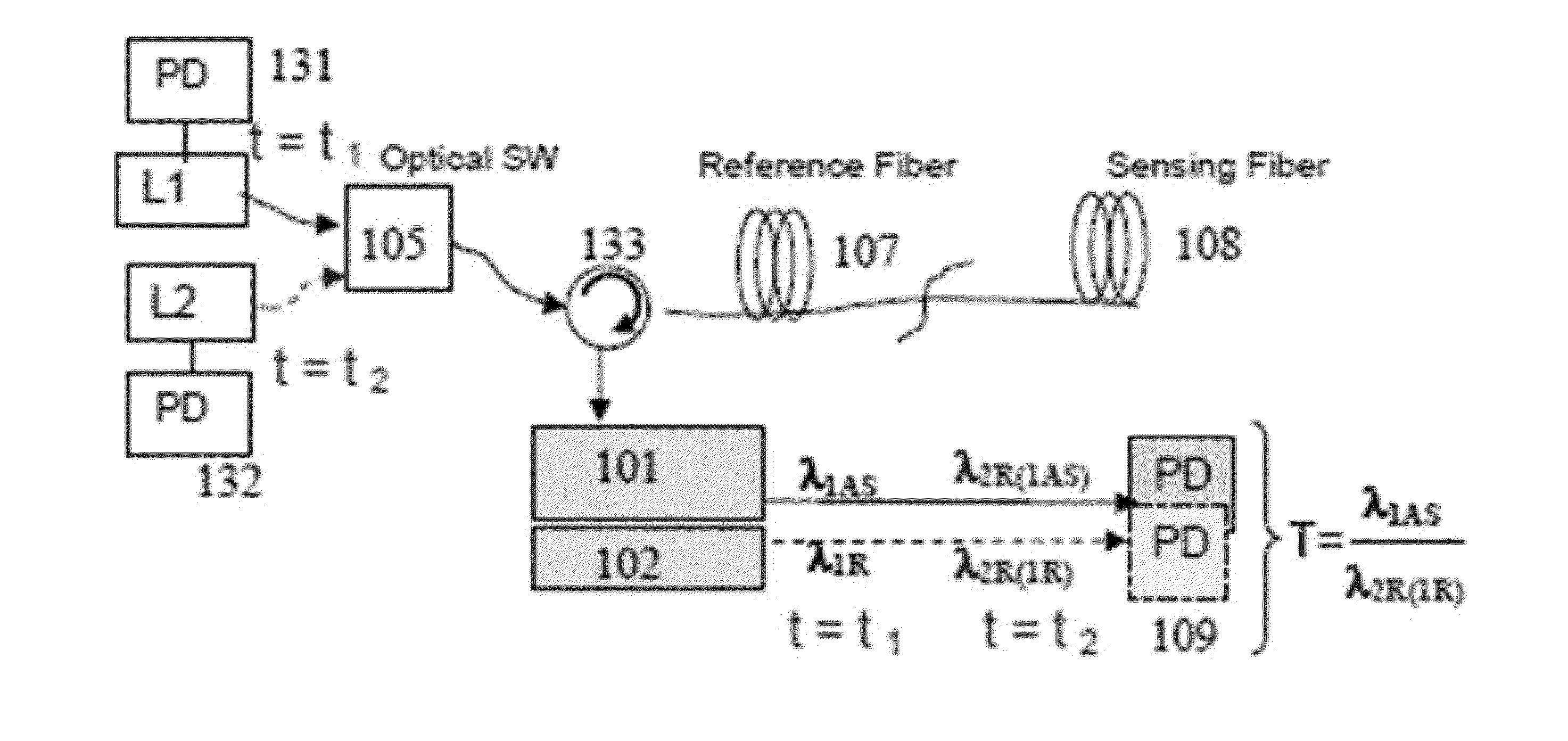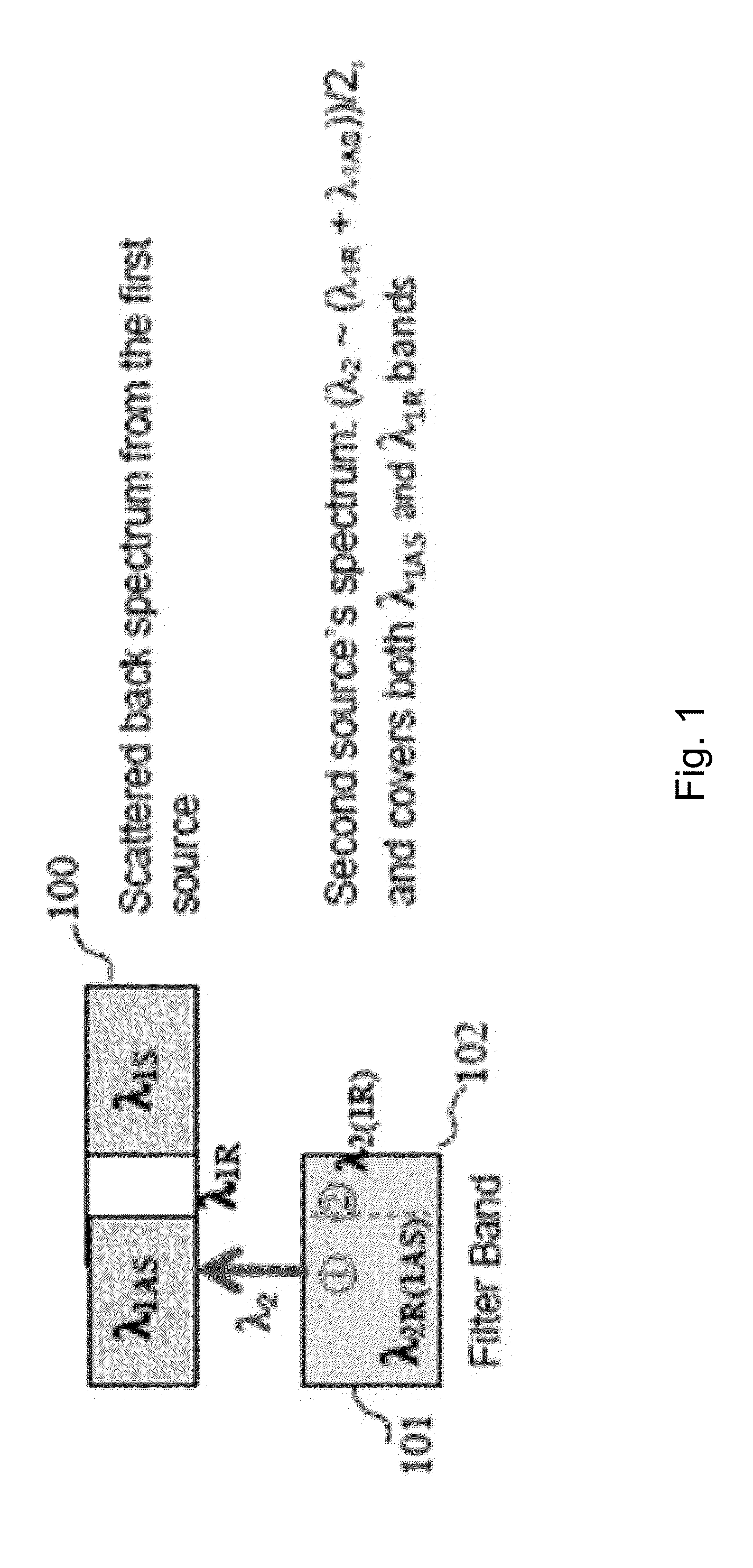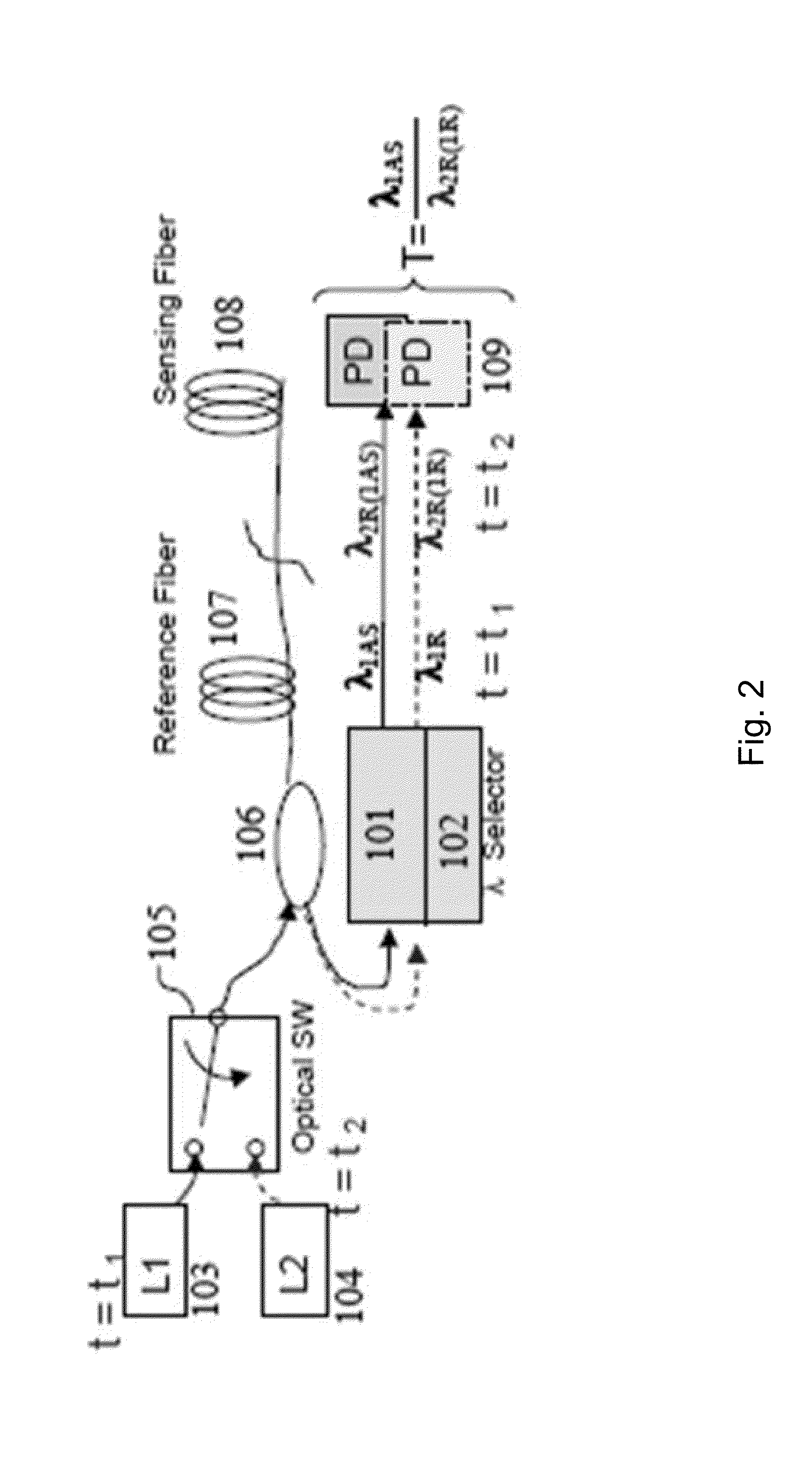Method and apparatus for auto-correcting the distributed temperature sensing system
a distributed temperature sensing and automatic correction technology, applied in the field of temperature sensing, can solve the problems of long time, high cost, and inability to accurately correct the temperature measurement in the distributed system, and achieve the effect of reliable and accurate temperature calculation
- Summary
- Abstract
- Description
- Claims
- Application Information
AI Technical Summary
Benefits of technology
Problems solved by technology
Method used
Image
Examples
Embodiment Construction
[0024]FIG. 1 shows the spectral requirements to select the secondary light source. The top figure illustrates 3 spectral bands 100 of the first (or primary) light source, anti-Stokes, Rayleigh and Stokes respectively. The bottom figure shows the secondary source's spectral components. The center wavelength of the secondary is selected to be located in the middle of anti-Stokes 101 and Rayleigh bands 102 of the primary source and are wide enough to cover both spectral bands. A three port (one input and two outputs) wavelength selector is used to select two bands, λ1AS, λ1R, or λ2R,1AS and λ2R,1R or λ2,1R.
[0025]FIG. 2 shows the embodiment of the system diagram. Two light sources, the primary source 103, L1 (conventional laser type) and the secondary 104, L2 (a SLD light source) chosen as the conditions mentioned in the previous page is consecutively selected by an optical switch, 105 to select L1 first (at time=t1) and inject the light to the sensing fiber through the coupler, 106. It...
PUM
| Property | Measurement | Unit |
|---|---|---|
| temperature | aaaaa | aaaaa |
| center wavelength | aaaaa | aaaaa |
| electric switching | aaaaa | aaaaa |
Abstract
Description
Claims
Application Information
 Login to View More
Login to View More - R&D
- Intellectual Property
- Life Sciences
- Materials
- Tech Scout
- Unparalleled Data Quality
- Higher Quality Content
- 60% Fewer Hallucinations
Browse by: Latest US Patents, China's latest patents, Technical Efficacy Thesaurus, Application Domain, Technology Topic, Popular Technical Reports.
© 2025 PatSnap. All rights reserved.Legal|Privacy policy|Modern Slavery Act Transparency Statement|Sitemap|About US| Contact US: help@patsnap.com



